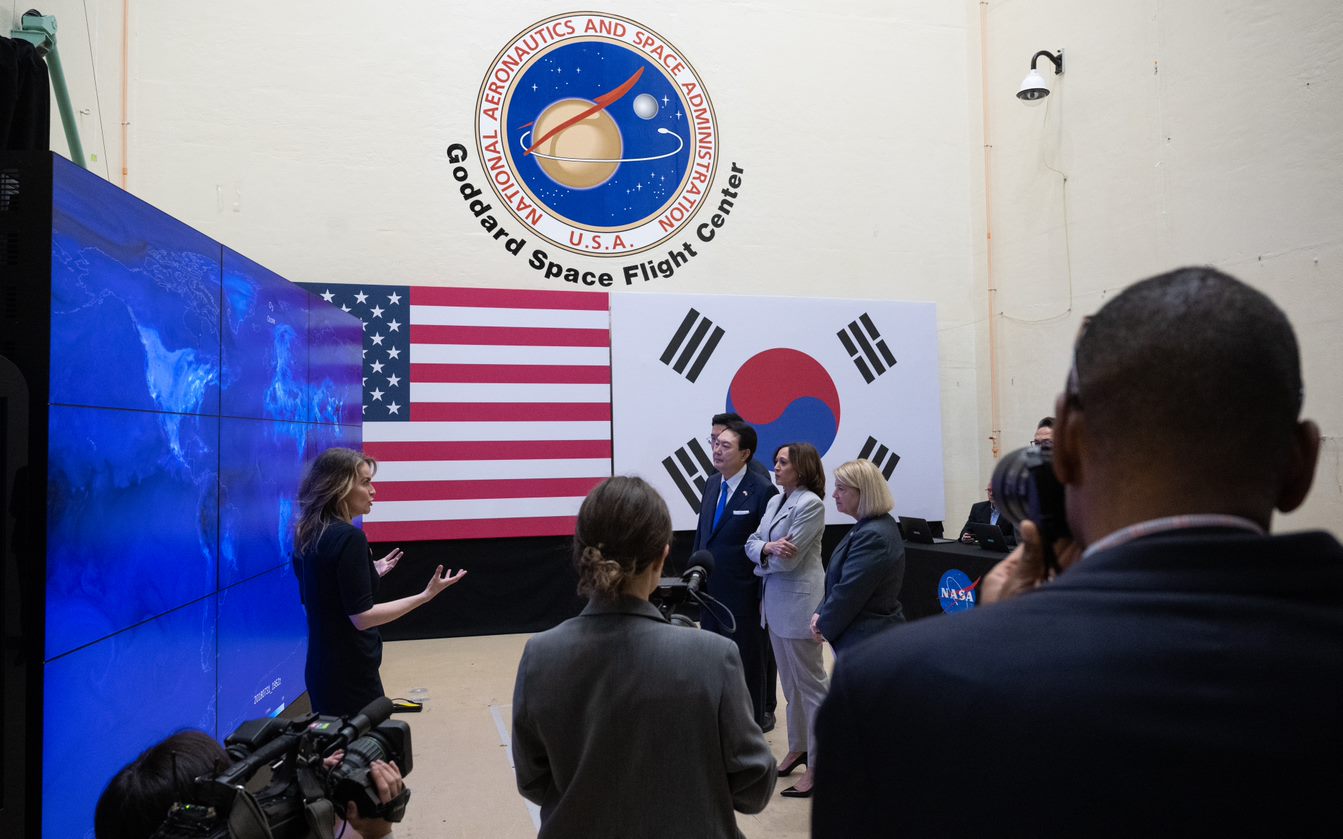The GMAO’s Lesley Ott Presents Air Quality Visualizations for Visiting Country Leaders
5.11.2023
On April 25, 2023, United States Vice President Kamala Harris and Republic of Korea (ROK) President Yoon Suk Yeol visited NASA’s Goddard Space Flight Center to learn more about how NASA studies climate change.
Makenzie Lystrup, director of Goddard Space Flight Center, reported in a recent message to employees that the event also featured the signing of a joint statement of intent for increased collaboration in science and exploration, as well as a discussion between President Yoon and several of GSFC’s talented Korean-American employees. “The climate crisis poses an existential threat to our world,” Harris said. “And to meet this threat, we must partner together to use satellite technology to monitor the impacts of that crisis on Earth. As one example, together our nations have built and placed satellites in orbit that can track air pollution in North America and Asia.” After the visit, Director Lystrup stated “The event was a success, and I give my heartfelt thanks and congratulations to all those who played a role on that significant day.”
The GMAO’s Lesley Ott was invited to speak in response to President Yoon’s interest in air quality and the recent launch of Tropospheric Emissions: Monitoring of Pollution (TEMPO), which has been closely coordinated with the Geostationary Environment Monitoring Spectrometer (GEMS) satellite launched by Korea in 2020. Both TEMPO and GEMS are geostationary air quality instruments measuring hourly concentrations of pollutants over North America and Asia, respectively.
In a 5-minute timeframe with the dignitaries, the presentation highlighted current satellite observations and modeling and the information that TEMPO and GEMS will provide. This included results from OMI NO2, showing decreases in NO2 over the United States from 2005-present, which demonstrate the positive impact of regulatory policies and technological advances in improving air quality. They also demonstrate the critical role that satellites play in monitoring the effectiveness of emissions reductions. The presentation ended by highlighting the international collaboration that has made the next generation of air quality sensors possible. An animation of surface ozone from GMAO’s GEOS-CF system showed the variability of pollution over the course of days and weeks and illustrated the importance of observing air quality pollutants throughout the day to better understand the processes controlling their concentrations.
Ott summed up her involvement in the visit this way: “It was a real honor to be able to present the work of many, many colleagues to President Yoon, Vice President Harris, and Deputy Administrator Melroy. Having the support and advocacy for NASA's Earth science work at this level is incredible. I'm so excited to be able to tell these stories that show how our observations are making a positive change in helping communities as they navigate climate change.”
- OMI NO2: https://svs.gsfc.nasa.gov/4994
- Joint AQ image:https://www.nasa.gov/sites/default/files/thumbnails/image/screen_shot_2023-03-30_at_1.10.49_pm.png
- Surface 03:https://svs.gsfc.nasa.gov/4764




